Tombstone 1882 was a thriving active town. Its initial attraction was silver mining. We found out that the house we’d purchased in town was over an 1882 silver claim called the California Mine! Whoa!!
Thinking about its origins, Tombstone Arizona History shows us the way it began as a mining town. Let’s get a feel for the times surrounding Tombstone in 1882. What was happening around that time?

Mining Started It!
If you’d like, click this link: Take a Look at the Map locating every mining claim registered in Tombstone. With all that, can you imagine the population in Tombstone in 1882? Plus the support services that went along with it. Actually there were more businesses and many more people than are currently living in town!
Tombstone District
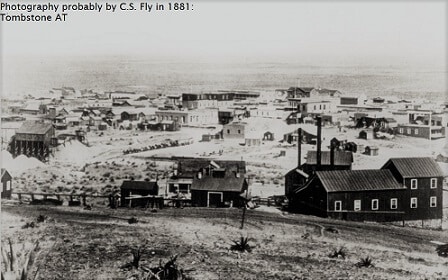
Before 1882, Tombstone was growing. Ed Schieffelin has credit for its founding and naming, about 1877. Its morose name became official on April 5, 1878. Only a few miners lived there then.
Two years later many more adventurers moved to Tombstone seeking their fortune in mining. The population in 1880 was over 2000. In 1882 the Chinese population alone was 245.
[Read Tombstone Mining History>]
Soon to be infamous players were already in the 1882 Tombstone District, such as all the Earps and Doc Holliday. The Clantons and the McLaurys were all living in Tombstone Territory. Johnny Ringo and Curly Bill Brocius had both been in the vicinity for a few years.
Commerce Available

By 1880 Tombstone had mercantile stores, butcher shops, assorted clothing, merchandise and food outlets and two furniture stores. Types of eateries included Italian and Chinese restaurants, ice cream parlors, bakeries. Several services provided medical needs, bathing rooms, haircuts and shaves, and transportation lines.

The Vizina & Cook building at the Northeast corner of 5th & Allen Streets was a major complex renting to many merchants. One noteworthy was The Oriental Saloon. The Safford Hudson & Company Bank located there. Another, the Pima County Bank was at 4th & Allen.
Stay In Tombstone’s 1882…
Tombstone was becoming one of the places to be, out West In The 1880s. Entrepreneurs immediately realized that hotels were needed. Seven hotels were built to provide overnight stays. Some still remain to this day! They are true Tombstone 1882 historic town sites:
- San Jose House – Built November 1879
- Russ House – Opened December 18, 1880 It’s Story>

Some were destroyed in the fires of 1881 and 1882:
- Mohave Hotel, becoming Brown’s Hotel – Originally built April 1879
- Rural House – Opened late 1879
- Grand Hotel* – Opened September 9, 1880
- Cosmopolitan Hotel – Originally opened late 1879, but burned in May 1882’s devastating fire
*The Allen Street fronting arches of the building were not destroyed and you can still see them now when you walk along the front of J.L.Silver Co. & Big Nose Kates
Out On the Town
Saloons were absolutely a part of life! 18 were available by 1880. Three were considered luxurious:
- The Alhambra – On Allen Street, between 4th & 5th
- Kelly’s Wine Rooms – On Fremont Street
- The Oriental Saloon – In the Vizina & Cook Building, 5th & Allen
Read More about some of these Old West Saloons
Another very popular early Tombstone saloon was the Golden Eagle Brewery on the Northwest corner of 5th & Allen. Not opulent! But with a lunch counter serving beer, spirits and meals. Plus reasonable prices.
We love the history of this authentic saloon. And meeting up with locals here! Yes, its historic counterpart is still there today on the corner of 5th & Allen: the Crystal Palace Saloon.
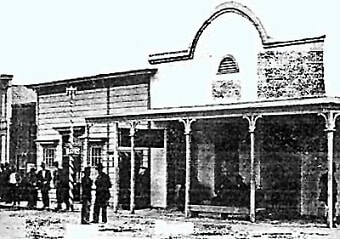

Tombstone 1882’s Importance
Those who lived in town generally aligned with either of the two political parties. Yes, more or Less: just like today!
Either the Republicans or the Democrats. Tombstone’s two newspapers had leanings to each party during 1882. Tombstone’s first newspaper, the Nugget, held the Democrat’s outlook. The Tombstone Epitaph’s editorials presented the Republican viewpoint.

Tombstone was organized by filing a town-site claim in the area, known as “Goose Flats.” The Tombstone Townsite Company recorded it with Pima County on April 22, 1879. Lots were sold, a post-office opened, a justice-of-the-peace appointed. An interim mayor and councilmen were elected. Fred White became Tombstone’s Marshall.
The Earps in Town – Begin Earning $$
Virgil Earp was appointed Deputy for the Southeastern area of Arizona Territory. He was in Tombstone by the beginning of December 1879. His wife, and brothers James and Wyatt, were with him. Some months later, other Earp brothers arrived in town: Morgan and Warren.
When the Earps arrived in town, they all began earning their living with mining claims, bartending and gambling. U.S. Marshal Crawley Dake appointed Virgil Earp as Deputy U.S. Marshal on November 27, 1879. Wyatt Earp was named a Deputy on July 27, 1880. But political complications led to Wyatt’s holding the post for about four months. He resigned to assist in a political campaign, which he thought would help his own agenda.1 Morgan Earp worked as a deputy for both his brothers.
By the end of Spring in Tombstone 1882, the Earps had moved on out of town. From consequences related to the OK Corral Shootout.

John H. Behan was selected as Deputy, replacing Wyatt. That caused underlying conflict between the two. Behan also was a bartender, gambler, horse racer, and was seen accompanied by many local women.
1882 Tombstone Sporting Entertainment
In Tombstone 1882 other activities kept local people occupied, besides the saloons and Old West Gambling Halls. Assorted sporting events entertained residents. Those mostly being young, single males.
- Cock Fighting – A popular spectator gaming match throughout the U.S. was happening in the Old West. The place to be on Sunday afternoons was D.P. Walsh’s Cock Pit Saloon, Allen St. between 6th & 7th.
- Rifle Tournaments – Often sponsored by local shooting galleries. For example, Tivoli Gardens had a shooting gallery and sometimes backed events. On November 18, 1880 Col. Stock staged a popular tournament. Sign-ups included Virgil Earp for a $70 prize.
- The Tombstone Baseball Club – Started March 1882 by George Staples Rice, Stonewall Mine superintendent. Their permanent name became the Tombstone Base Ball Association.
- Boxing & Wrestling matches – Usually in the town’s theaters or larger saloons, but sometimes outdoors. Many at Tombstone Driving Park. Wrestling often had a hefty winner’s pot, authentic ground rules and a referee. Boxing was less regulated. One match went 34 rounds! Sometimes arranged to settle a grudge!!
- Tombstone Driving Park – Quite a favorite by 1882. Built by John Doling for horse races, it became a community gathering spot. Well known locals such as Wyatt Earp, John Behan and James Vogan raced their steeds there. Behan often was a judge.
- Track & Field contests – 250 Yard Dashes, and High Jumps were the favored events. Usually sponsored at Tombstone Driving Park.
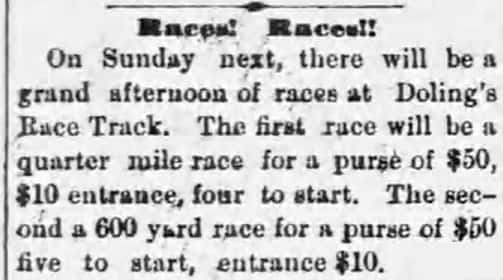

Social Entertainment in Tombstone 1882

Other entertainment was accessible in Tombstone 1882. Women needed a means to enter social life. Men desired to engage in uplifting fellowship together with their wives. Single men and women also needed to properly meet each other in a civilized town, after all!
Such was the case in the growing town of Tombstone, 1882. This vibrant, active community, with many businesses and families. Social clubs, church groups and political organizations formed. This enabled more interactions. For instance…
- Schieffelin Hall was the prime entertainment spot for the entire town. Initiated by the Irish Land League on March 17, 1881, before the official opening, with their St. Patrick’s Day Ball. Ready for occupancy on June 16, 1881.
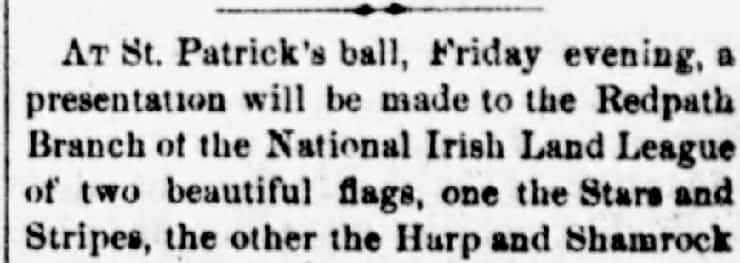
- Held at Danner & Owens Hall: the Grand Calico Ball, a by-invitation Thanksgiving-eve dance. They also ran a New Year’s Eve Masquerade party
- The Miner’s Union organized. The initiating meeting transpired August 9, 1880
- The Tombstone Brass Band’s musician members were mostly Welsh and Cornish men. Donations provided for instrument purchases.
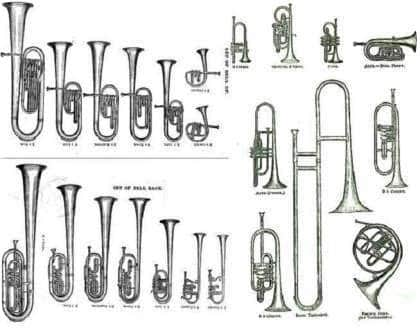
- Local churches held Christmas events for children. Santa bestowed gifts amidst decorated Christmas trees.
- The 6th Street Opera House apparently attracted the town’s “lower classes.” Those not in the “upper echelon” of local society. Located near the Southwest corner of Fremont & 6th, also called the E. Fontana Dance Hall. Traveling performers played there. Customers were known to be “motley…mingled Mexican and white…ill-dressed, and some half-drunk.”2
- Ritchie’s Hall was the other end of the spectrum, for the local elite. On 5th St., south of Fremont, superbly stocked and furnished. Private club rooms went only to key-holders. Varied entertainment troupes performed.
- Gird Hall was another available for traveling entertainers. Located near 4th & Fremont Streets
- The Bird Cage Theatre opened a few days before the New Year in Tombstone of 1882 was celebrated

Other Tombstone 1882 Signs of Civilizing
Women of Tombstone in 1882 wanted a local social life. Thus they attended theatrical productions, went to church, and became members of suitable groups. Some options were…
- The Home Dramatic Association, begun by local gentlemen who invited the women to join in
- J. Goldtree & Company initiated the first Tombstone library within its cigar store. They set aside a soothingly decorated parlor and reading room. They loaned books and publications.
- Clara Spalding Brown was a founding member of the Tombstone Dramatic Association.
- The Methodist Society ladies sponsored receptions to encourage church attendance while introducing newcomers to town.
- Churches sponsored ice-cream socials.
- W.A. Cuddy organized the Tombstone Dramatic Relief Association, a public service organization for any deserving need. Clara Spalding Brown was Secretary.
- The school system was up and running.
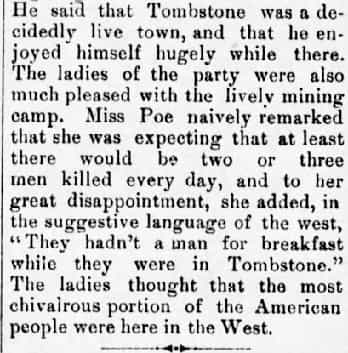

A Woman in Tombstone 1882
Clara Spalding Brown was an 1880 to 1882 Tombstone resident. Married to a local miner, she involved herself in town activities.
Clara corresponded to the San Diego Daily Union newspaper. Her newsy letters chronicled life in Tombstone during her time there. She penned it from her point of view: a woman’s perspective.
Note some of her descriptions, from her 1882 Tombstone home letters…
- January 29, 1882, published February 4, 1882: “…now the state of affairs in this camp is far more unsettled than it was in the early days of the settlement. It is not quite so bad as a New York paper, which asserts that “few die with their boots on,” has it, but but altogether more lawlessness than should be countenanced in any portion of Uncle Sam’s domain.”
- March 10, 1882, published March 13, 1882: “The case of the people against the Town Site Company, having been allowed, through some remissness on the part of the lawyers, to go by default, the injunction on Clark and Gray has been removed, and Clark now publishes a conspicuous notice to settlers in the papers, to the effect that he is prepared to sell lots at reasonable figures…”
- March 26, 1882, published March 31, 1882: “…it was not the Earps who first disturbed this quiet, and that their criminal actions since have been from the determination to avenge the murder of a dearly beloved brother. I do not present this as sufficient excuse for their conduct, or approve any act contrary to law; but there are certainly extenuating circumstances to be taken into consideration.”
- May 15, 1882, published May 20, 1882: “This is a season of church benefits. Pinafore by the Episcopalians was preceded by the Floral Mythological Concert for the Presbyterians, and a necktie party and dance by the Catholics, while the Methodists are are arranging for a strawberry festival.”
- July 24, 1882, published July 30, 1882: “A large portion of the burned district has already been rebuilt, with even more substantiality and elegance than before.”
- September 30, 1882, published October 5, 1882: “Society is improving all the time. Gradually the standard of respectability has been raised, until now a lady can go “into company” without coming into contact with, and thus treating as an equal, persons who would elsewhere be proscribed from the ranks of honest society. The churches are all undergoing improvement and the schools are increasing rapidly.”
- November 14, 1882, published November 18, 1882: “With this letter I resign the post I have hitherto held as your Tombstone correspondent, for this, I trust is the last letter I shall ever indite from so gloomily named a town.”
Tombstone Fires
1881 Burn
Tombstone’s first major fire shocked the town! It happened June 22, 1881. Starting out front of the Arcade Saloon, on Allen Street, three shops East of the Oriental. It consumed four city blocks, wiping out or damaging 66 businesses. In six months, nearly everything was rebuilt even better.
This fire illuminated Tombstone’s lack of fire-fighting equipment. There was a volunteer fire department, and since 1881, a water source. But they lacked efficient means to get water to fires at needed pressure.

Executive action began. The Rescue Hook and Ladder Company was organized on June 26, 1881. Now plans developed for firehouse construction on Toughnut Street, between 5th & 6th. Completed August, that year. They bought a hook and ladder truck from a San Francisco department.
They addressed the water issue. The Huachuca Water Company planned a system of pipes and reservoirs to get water to Tombstone from the Huachuca Mountains Southwest of town. The entire system was complete by July 1882.
Not in time to help fight the biggest fire in the town’s history!
Tombstone 1882 Conflagration
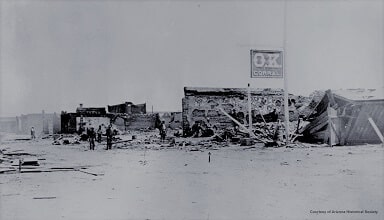
Tivoli Gardens was a saloon on the North side of Allen Street, between 4th & 5th. On May 26, 1882 a fire began in the rear water closet, spreading quickly to its canvas roof and wood framing. It then sped throughout the whole block, jumping to the South side of Allen, along 4th.
It consumed the Grand Hotel. Lit into Spangenberg’s Gun Shop, through gunpowder and ammunition. Sparks flew! Police Chief Dave Neagle was on the scene, as were Sheriff Behan and his deputies, plus the fire department.
The fire reached Fremont Street’s North side. Crossing West of Fourth Street. People rallied to save the Oriental Saloon, with continuous streams of bucket-brigade water on top as best as they could.
Finally burning itself out, when beaten back by bucket-brigades and towns-folk beating it down. The entire business district was burnt out! All major hotels, saloons, restaurants, groceries and mercantile shops were gone.
But a month later – everyone was busy rebuilding!

Read Even More On Tombstone Fires>
See Further Into Tombstone AZ History>
But you know, it was – and still is…
The Town Too Tough to Die!
References
1 Guinn, J. (2011). The last gunfight: The real story of the shootout at the O.K. Corral and how it changed the American west. New York: Simon & Schuster.
2 Noon (1880, Feb. 7). Chicago Tribune. Chicago, Illinois.
Bailey, L.R. (2004). Too tough to die: The rise, fall and resurrection of a silver camp: 1878 to 1990. Westernlore Press. Tucson, AZ. – Major reference for everything not notated.

Why not enter the killing of Antonio Figueroa by Sheriff David Neagle, on May 10, 1882, in Tombstone, the cause and where Antonio Figueroa was laid to rest? Do you have an obituary or a list of family members? Any photos?
Some details I found on the internet, that he was buried at Boot Hill, took a trip to the cemetery from San Diego, California on January 25, 2025, employees had no information. That’s impossible to have no idea. Awaiting your kind answer. Any information on my great ancestor will be greatly appreciated.